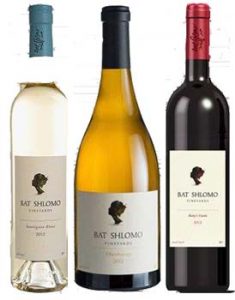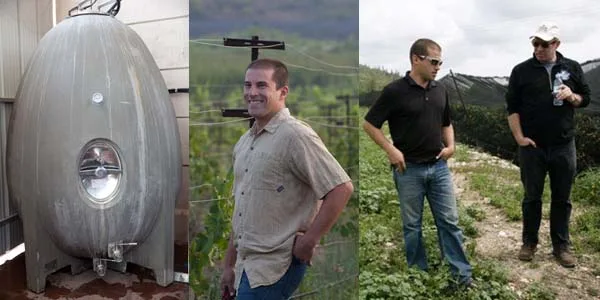This is a story that begins and ends in the founders street of Bat Shlomo, a farming village founded in 1889, on the southern slopes of Mount Carmel.
Like many wine stories in Israel, it starts with a Rothschild. Baron James Jacob de Rothschild was one of five bothers that were sent from the ghetto in Frankfurt to start a bank in the European capitals. He was the youngest and most brilliant of the brothers, and he settled in Paris.
For thirty years he tried to buy Château Lafite, even then a proud symbol of France. He finally succeeded in 1868, but died three months later without even managing to visit. It was a long journey from Paris to Bordeaux in those days.
His three sons took over ownership, one of whom was Edmond. However the matriarch of the château was James’ widow, Baroness Betty Salomon de Rothschild, who resided there and redecorated it and furnished it to her tastes. Ironically she is most known as the subject of the famous portrait painted by Jean Auguste Dominique Ingres, but she certainly left her mark on Château Lafite.
When Edmond de Rothschild took it upon himself to found an Israeli wine industry which had lain dormant for 2,000 years, he took the trouble to honor his parents, like a good Jewish boy. Zichron Ya’acov, one of the two primary winery farming villages founded in 1882, was named after his father. It means ‘in memory of Jacob.’
He then founded an overflow community, more like a street, which was called Bat Shlomo, literally the daughter of Shlomo. This was in honor of his mother Betty.
Visit the street today and you get a glimpse of pre-state Israel. Fourteen houses including a synagogue, stand there as evidence of those pioneering times. The red roofed founder’s houses, squat, square and made from stone, with a row of handsome cypresses marking the way.
What makes wine more interesting than say, coca cola, is that behind every winery is the fulfilment of a dream or vision of someone. Each wine produced is a celebration of the place where the vineyards grew and person that made it. Each wine has a story.
At the end of this road reeking with nostalgia, is Wadi Milek. There I was able to visit some special young vineyards. These were established by someone who is described as a serial entrepreneur. I am referring to Elie Wurtman, a wine lover inspired by that founders street in Bat Shlomo and the Rothschild wine revival over 120 years ago. He chose as his professional partner Ari Erle, a Californian born, wine grower-Zionist, to plant vineyards and made a connection with the Regavim Agricultural School to ensure their students cared for the precious vines. This resulted in Bat Shlomo Vineyards, a winery which revitalizes the Rothschild vision of vineyards, wine and Jewish labour, in a place where it all started.
Ari Erle is pretty laid back, languid, Californian style. He keeps his passion and dynamism well buttoned up. But he has it in buckets. He studied winemaking in California at UC Davis and then learnt his craft working at a variety of top notch Californian wineries such as Colgin Cellars, Clos du Val and O’Shaughnessy.
He must be an out and out Zionist. Only a Zionist would leave the comforts of California to serve as a lone soldier in the IDF. He also must be pretty confident in his ability. He has planted and managed the vineyard using his heartfelt beliefs from California, ignoring some of the prevailing customs here. Spacing of vines is tighter, there is a lush cover crop between the vines and he uses a cross arm style of trellising. This is someone who knows what he believes in and wants to practice what he preaches.
The vineyard is self-sustainable which he prefers to organic grown vineyards. The innovation continues to the winery. We know that cement tanks are back in vogue. Ten years I would show people around Carmel’s Zichron Ya’acov Cellars and rush past the bulky out of fashion cement tanks explaining they were part of the winemaking history of Carmel. Basically they were installed in the 1920’s because they gave more capacity than the gigantic oak barrels used previously.
A new winemaker and a returning fashion put paid to that. Each tank was painstakingly cleaned, restored and refurbished and they are now much valued. Of course, there is nothing new under the sun in winemaking. Today cement tanks and the large size barrels are back in use even in the most progressive wineries. In winemaking, what goes around, comes around.
Well, Ari Erle also liked cement, but being ultra-modern, innovative and up to date with tomorrow’s trends, he chose to purchase a large concrete egg to assist his winemaking! And if this was not enough, to be creative in the vineyard and winery, he also shows his advanced thinking in the finished bottle. His Sauvignon Blanc is closed with a glass stopper, which pops open. No chance of cork taint here. It is also easy to close and re-use, making this an innovative water or olive oil bottle when the wine is finished.
Ari told me he was a farmer at heart and liked nothing more than the grow something from scratch. However I think he is too restless to devote himself to one project, so he spreads his talents.
He is the practical winemaking teacher at the Ohalo College in Katzrin. This is a serious program in association with the leading winemaking school in Beaune. In the first year, Erle makes wine with his students in their experimental winery, using fruit from their experimental vineyard at Merom Golan. The second year the students make their own wine, under the teacher’s guidance of course.
He is the consultant winemaker at the innovative start-up Jezreel Valley Winery and has been tapped to be the associate winemaker of the exciting Covenant Israel project. (Watch this space!) Covenant may just be about the most lauded kosher wine in the world when grown in the Napa valley. How it fares here, we are all fascinated to find out.
The restless farmer also dabbles in the commercial side of wine. He has an importer and distributor license in California for The Israeli Wine Company, whose objective is to market lesser distributed quality boutique wines.
As far as learning what Erle’s favorite grape varieties are, you won’t get far if you look at the wines he produces. Bat Shlomo Vineyards uses the classic varieties like Cabernet Sauvignon, Chardonnay and Sauvignon Blanc. Jezreel Valley makes predominantly Mediterranean style wines using Carignan, Argaman and Syrah. Covenant Israel will be focused on Syrah. Horses for courses. Whatever the variety, Erle’s wines are good, his services are in demand and he is a rising star of Israeli wine.
I mentioned this is a story that begins and ends in Bat Shlomo. This is because Elie Wurtman has purchased one of the founder’s houses which will be restored as a winery and visitors’ center. Herzl said “if you will it, it is no dream.” Well, Elie and Ari’s dream is coming true. Welcome to Zionism of the 21st century, which echoes and recreates the Zionism of the First Aliyah. Who said we are in a period of Post Zionism

The wines of Bat Shlomo Vineyards are distinguished by elegant labels, with a silhouette of Baroness Betty on them.
Bat Shlomo Sauvignon Blanc 2013
Aromatic sauvignon blanc, complex nose with piercing acidity that cleanses the palate. A perfect food wine. Best with fish cooked under the grill, mezze or sushi. PRICE: 89 ILS
Bat Shlomo Chardonnay 2013
This is a full bodied oaky, creamy chardonnay. Californian style. This is a wine that needs aerating and it should not be served too cold. Perfect with pasta in a cream sauce or a chicken dish. PRICE: 120 ILS
Bat Shlomo Betty Cuvée Cabernet Sauvignon 2011
A big Bordeaux style wine, with aromas of black berry fruit mingled with oak flavors, a chewy mouth filling flavor and a long finsh. To be drunk with a leg of lamb, entrecote steak or cheddar cheese. PRICE: 160 ILS



